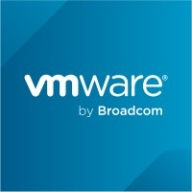

LogicMonitor and VMware Aria Operations for Applications compete in the IT infrastructure monitoring category. LogicMonitor seems to have the upper hand due to its comprehensive and customizable dashboards.
Features: LogicMonitor offers comprehensive dashboards, real-time data interaction, and the ability to create custom data sources and dashboards. VMware Aria Operations for Applications provides strong virtualization and container management, good Kubernetes management support, and extensive integration features.
Room for Improvement: LogicMonitor needs better topology mapping, simplified reporting, and easier upgrades from the repository. VMware Aria Operations for Applications struggles with an initial setup process, lacks enhanced predictive alert capabilities, and needs simpler integration processes.
Ease of Deployment and Customer Service: LogicMonitor can be deployed across Public Cloud, On-premises, and Hybrid Cloud environments, and users report positive experiences with customer service. VMware Aria Operations for Applications is optimal for On-premises and Hybrid Cloud environments, with comparable customer service quality.
Pricing and ROI: LogicMonitor is viewed as affordable and cost-effective, offering substantial savings through reduced false alerts and a streamlined monitoring process. VMware Aria Operations for Applications is often seen as expensive due to its high licensing costs but provides value in consolidating application modules for enterprises.
| Product | Market Share (%) |
|---|---|
| VMware Aria Operations for Applications | 1.9% |
| LogicMonitor | 2.7% |
| Other | 95.4% |


| Company Size | Count |
|---|---|
| Small Business | 10 |
| Midsize Enterprise | 9 |
| Large Enterprise | 8 |
| Company Size | Count |
|---|---|
| Small Business | 4 |
| Midsize Enterprise | 1 |
| Large Enterprise | 10 |
LogicMonitor offers flexible IT monitoring with customizable dashboards and robust alerting capabilities. It integrates seamlessly with third-party apps like ServiceNow and provides a single-pane view for diverse IT environments, aiding in proactive issue resolution and enhancing operational efficiency.
LogicMonitor stands out with its capability to monitor diverse infrastructures including Cisco Voice systems, data centers, and virtual environments. Supporting servers, storage, networking devices, and applications, it provides seamless integration with cloud services like AWS and Azure. Users leverage its scalability and flexibility, benefiting from dynamic thresholds, anomaly detection, and detailed visualization. All these features contribute to improved management of IT assets and streamlined operations. Users suggest improvements in mapping, reporting, and automation for remediation, desiring more customizations and an expansive application performance monitoring toolset.
What are LogicMonitor's key features?LogicMonitor is widely implemented across industries, providing monitoring for infrastructure in sectors like telecommunications, cloud computing, and managed services. Managed service providers particularly value its ability to track client environments, deliver proactive alerts, and generate comprehensive reports, while its integration with cloud platforms like AWS and Azure offers users centralized management and visibility into IT assets worldwide.
VMware Tanzu Observability by Wavefront is a powerful tool for monitoring and analyzing the performance and availability of applications and infrastructure in real-time.
With its comprehensive monitoring capabilities, visualizing and analyzing data becomes effortless. The real-time alerting system ensures timely issue resolution, while scalability and a user-friendly interface provide a seamless experience for smooth operations.
We monitor all Cloud Monitoring Software reviews to prevent fraudulent reviews and keep review quality high. We do not post reviews by company employees or direct competitors. We validate each review for authenticity via cross-reference with LinkedIn, and personal follow-up with the reviewer when necessary.